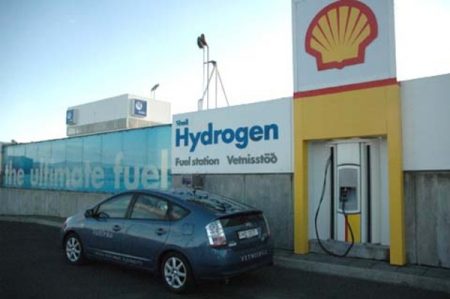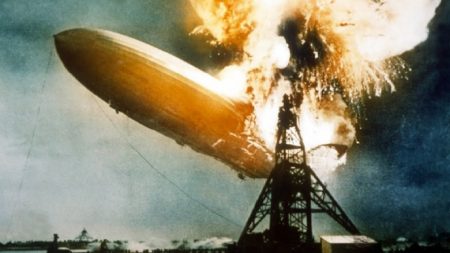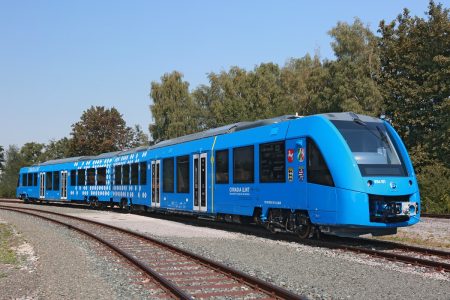January 6, 2017 – Hydrogen as a transportation fuel has had a checkered past. Its most famous failing occurred when the airship Hindenburg caught fire at Lakehurst, New Jersey in 1937. Of course the Hindenburg wasn’t using hydrogen for energy. Instead the very low specific gravity made it an ideal choice for balloons and dirigibles. And because helium, the inert alternative gas, was unavailable in Nazi Germany (the U.S. had a monopoly on the gas and applied a ban on export to countries who could use it for military purposes) the Hindenburg ended up being filled with 198 million liters (7 million cubic feet) of hydrogen.
The memoru of the Hindenburg disaster is long in the past and hydrogen and Germany are once more crossing paths in two interesting projects.
Creating a Hydrogen Fueling Infrastructure
Germany is building a network of hydrogen fueling stations with Royal Dutch Shell the primary contractor. The goal is to have 400 across the country by 2023. Shell is betting on hydrogen to be a common energy source for fuel cell cars and trucks in the next decade. Germany is planning to eventually build 700 sites, considered optimal for maximizing the operation of hydrogen-fueled vehicles.
To top up a hydrogen car takes about the same amount of time as traditional gasoline and diesel. Cost is about the same as well. And hydrogen has no range anxiety issues because fuel cell cars go just as far as gasoline and diesel.
Shell opened its first hydrogen station in Germany in 2011. Today it operates less than 20 across the country. Hydrogen is sourced from natural gas using steam-methane reformation. Shell is experimenting using water as the source, applying an electrolytic process as an alternative. That would make hydrogen a zero-carbon fuel. Storage requires cryogenic liquid compression and insulated tanks. These are triple-layered and made from woven carbon fibers.
Building a Hydrail
Germany’s second project is the building of a hydrogen-powered train network. Alstom, the French rail transport company is finishing the first one called the Coradia iLint. This 300-passenger train can run on any existing rail line within Germany, electrified or not. The train is quiet and emission free. The power source is fuel cells which generate electricity to drive traction motors. The hydrogen for Coradia iLint will be sourced from waste products produced by Germany’s chemical industry. The byproducts of these new trains are zero carbon, just condensed water and steam. The first is scheduled to start operations next December. Germany eventually plans to have 40 hydrail trains in operation with a target date of 2020.
Will a hydrogen fueling infrastructure and fuel cell passenger trains put German citizens at risk? Is there a chance the use of hydrogen will spawn “little Hindenburgs” blowing up from time to time?
Not according to Toyota who is building hydrogen fuel cell cars. Its Mirai, will be available in California and Japan this year. Toyota describes hydrogen as far less a fire hazard than gasoline or diesel even though the gas is 90% more volatile than those fuels. The reason why, hydrogen is 16 times lighter than normal air. On the Mirai the gas gets compressed to 69,000 kilo-Pascals (10,000 pounds per square inch). Stored in a carbon-fiber tank, if it springs a leak, hydrogen will immediately dissipate into the surrounding air. Not so with gasoline which in liquid or vapour can instantly become a fire hazard.











